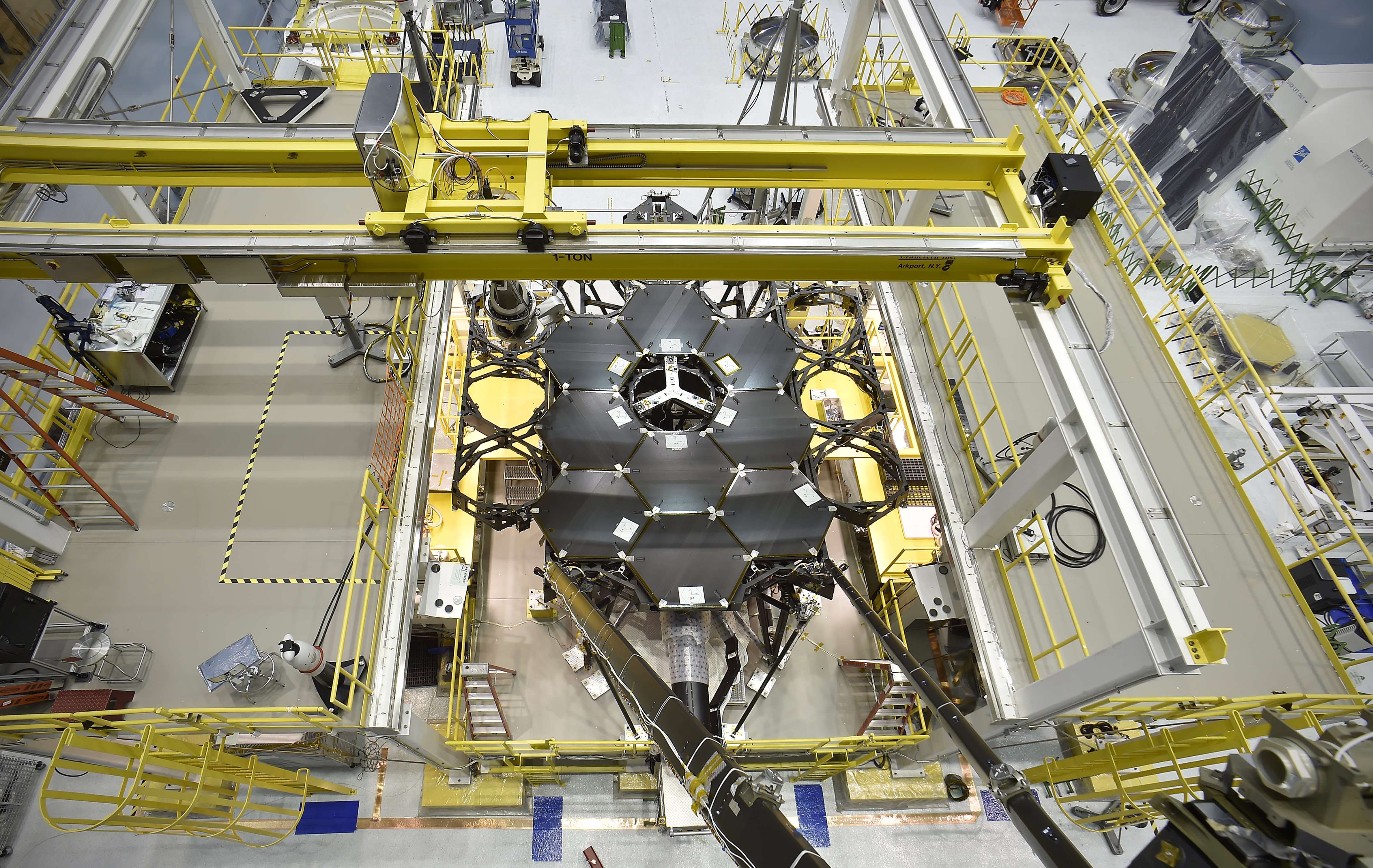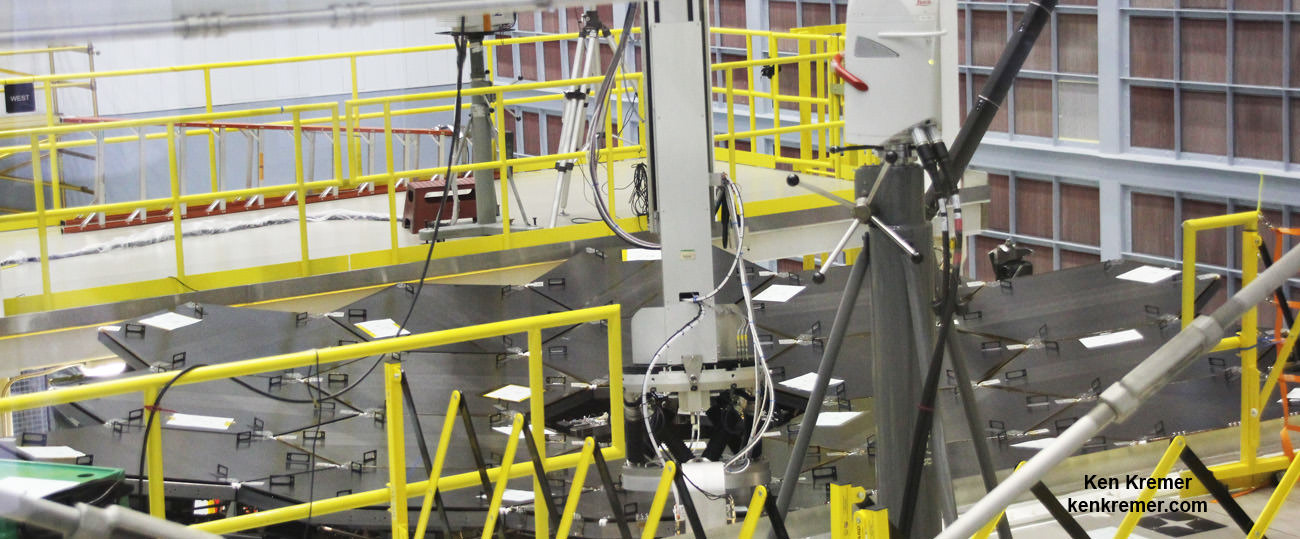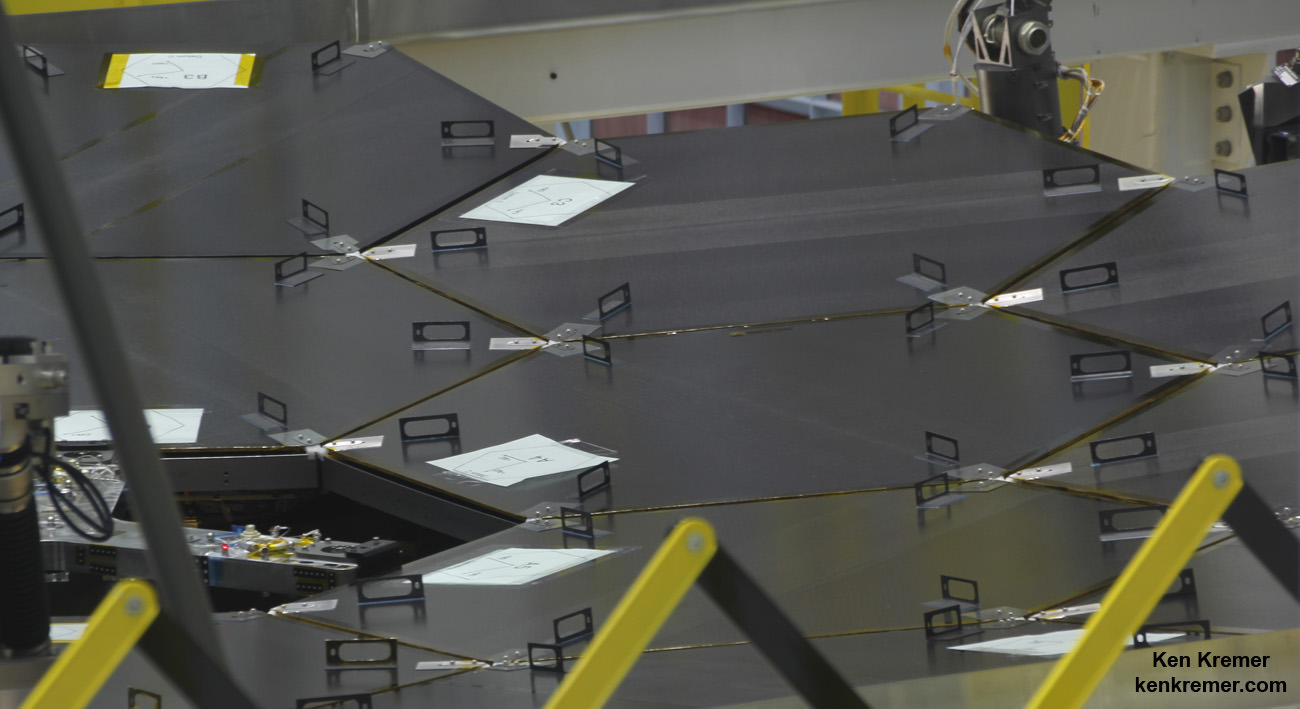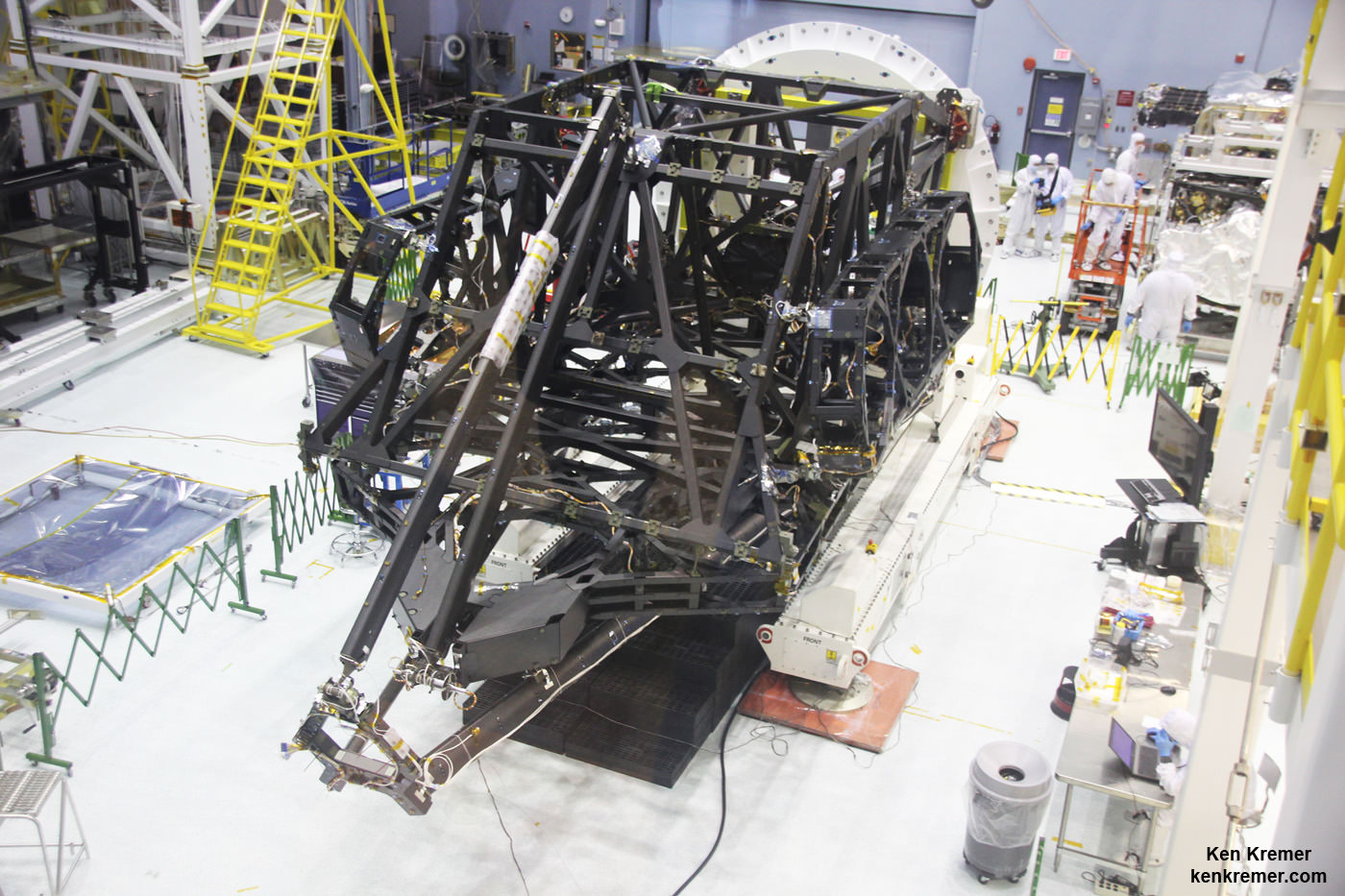
See time-lapse video below
NASA GODDARD SPACE FLIGHT CENTER, MD – A time-lapse video newly released by NASA documents the painstakingly complex assembly of the primary mirror at the heart of the biggest space telescope ever conceived by humankind – NASA’s James Webb Space Telescope (JWST).
Although the video, seen here, is short, it actually compresses over two and a half months of carefully choreographed and very impressive mirror installation process into less than 90 seconds.
Video caption: This time-lapse shows the assembly of the primary mirror of NASA’s James Webb Space Telescope (JWST).
JWST is the scientific successor to NASA’s 25 year old Hubble Space Telescope and will be the most powerful space telescope ever built.
Webb is designed to look at the first light of the Universe and will be able to peer back in time to when the first stars and first galaxies were forming. It will also study the history of our universe and the formation of our solar system as well as other solar systems and exoplanets, some of which may be capable of supporting life on planets similar to Earth.

The Webb telescopes huge primary mirror is comprised of 18 hexagonal-shaped primary mirror segments measuring 21.3-foot (6.5-meter) in diameter.
They were installed onto the telescopes backbone structure by technicians assisted by a specially designed robotic arm. They worked day and night in a massive clean room at NASA’s Goddard Space Flight Center in Greenbelt, Maryland.
The team used the claw-like robotic arm to meticulously latch onto each mirror to maneuver and attach each of the 18 primary mirrors onto the telescope structure.
Together, the 18 mirrors form a honeycomb like structure.
The intricate assembly work to piece the primary mirrors together began just before the Thanksgiving 2015 holiday, when the first unit was successfully installed onto the central segment of the mirror holding backplane assembly.

One by one the team populated the telescope structure with the primary mirrors at a pace of roughly two per week since the installations started some two and a half months ago.
The primary mirror was completely assembled on February 3, 2016.
During the installation process each of the gold coated primary mirrors was covered with a black colored cover to protect them from optical contamination.
Indeed the assembly of Webb’s primary mirror marks the culmination of a decade of work to design, develop and manufacture the telescope and counts as the start of the final assembly phase that will ultimately lead to its launch in late 2018.
Each primary mirror measures just over 4.2 feet (1.3 meters) across and weighs approximately 88 pounds (40 kilograms). They are about the size of a coffee table and made of beryllium.

In space, the folded mirror structure will unfold into side by side sections and work together as one large 21.3-foot (6.5-meter) mirror, unprecedented in size and light gathering capability.
The Webb Telescope is a joint international collaborative project between NASA, the European Space Agency (ESA) and the Canadian Space Agency (CSA).

Watch this space for my ongoing reports on JWST mirrors, construction and testing.
Stay tuned here for Ken’s continuing Earth and Planetary science and human spaceflight news.


Is UT planning something special for ‘first light’? Got a pod cast access for us? That would be so sweet… I can’t wait. I know how excited I got when I saw first light in my scope, now multiply that by millions or billions?
Just checked.. beryllium is/was last quoted at $230/lb. I’ll assume the 88 lbs. per mirror includes mirror mounts and/or other instrumentation so I’ll hazard to guess there’s actually somewhere around ~40 lbs. of actual beryllium in each of the 18 primary mirrors? = 720 lbs. X $230 = $165,000 for that metal… at today’s prices. About a golf ball size or 49.5 grams of 24 Karat gold was used to coat the primary mirrors which would cost a mere $1,209.50. So with that in mind, it would hardly be worth a passing Space Pirate’s interest? That is unless the Space Pirate wants to use the entire mirror array as part of a one shot e/m weapon?
Comet deflectors anyone?